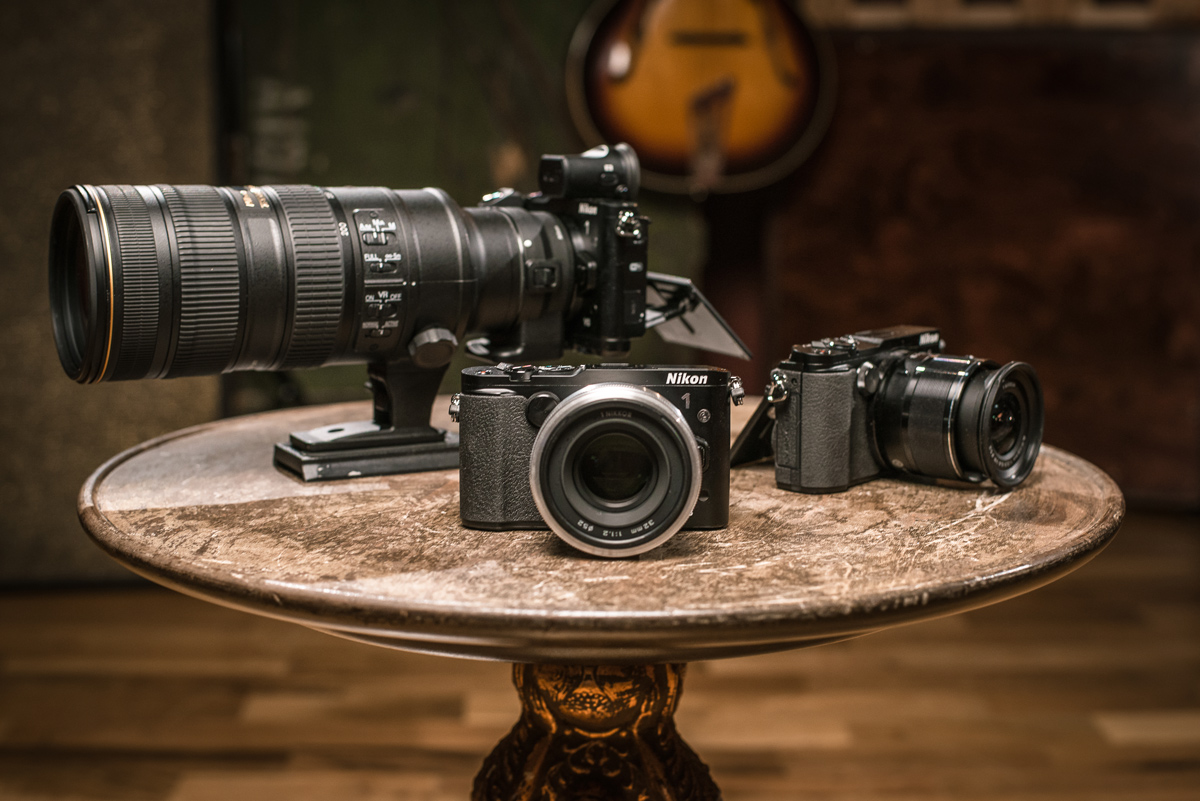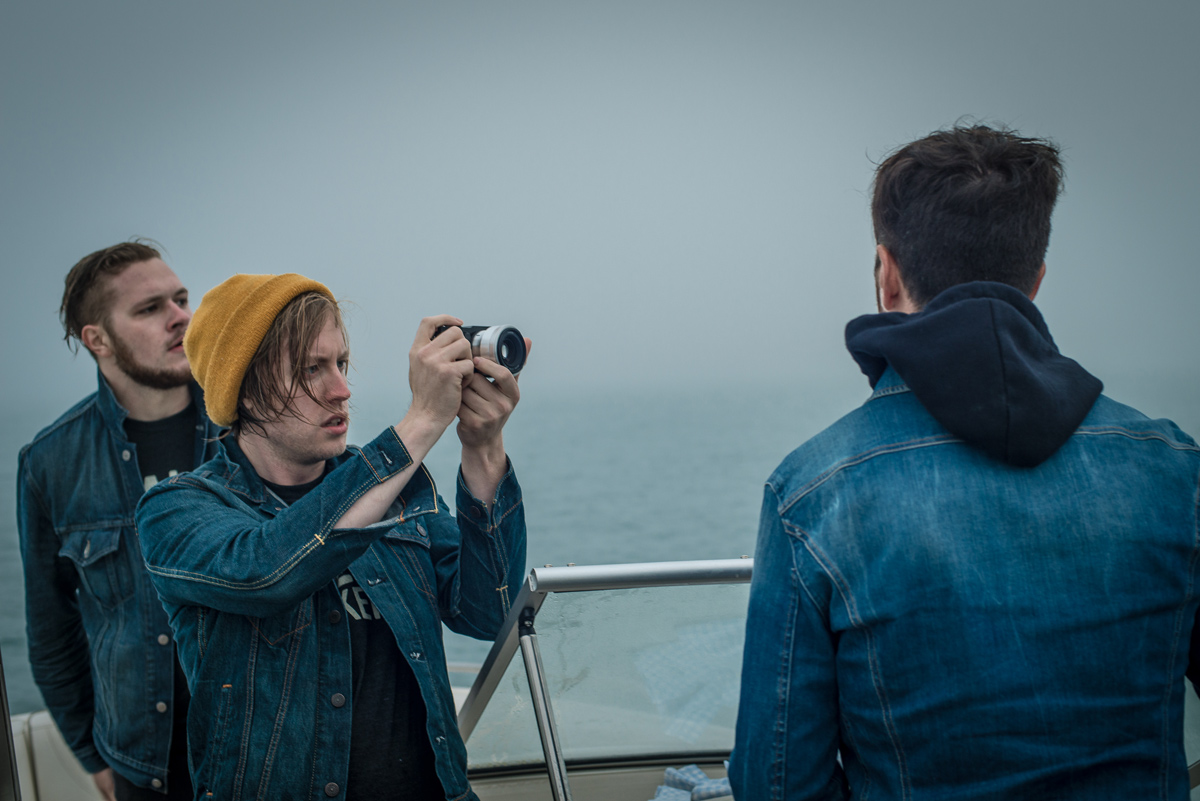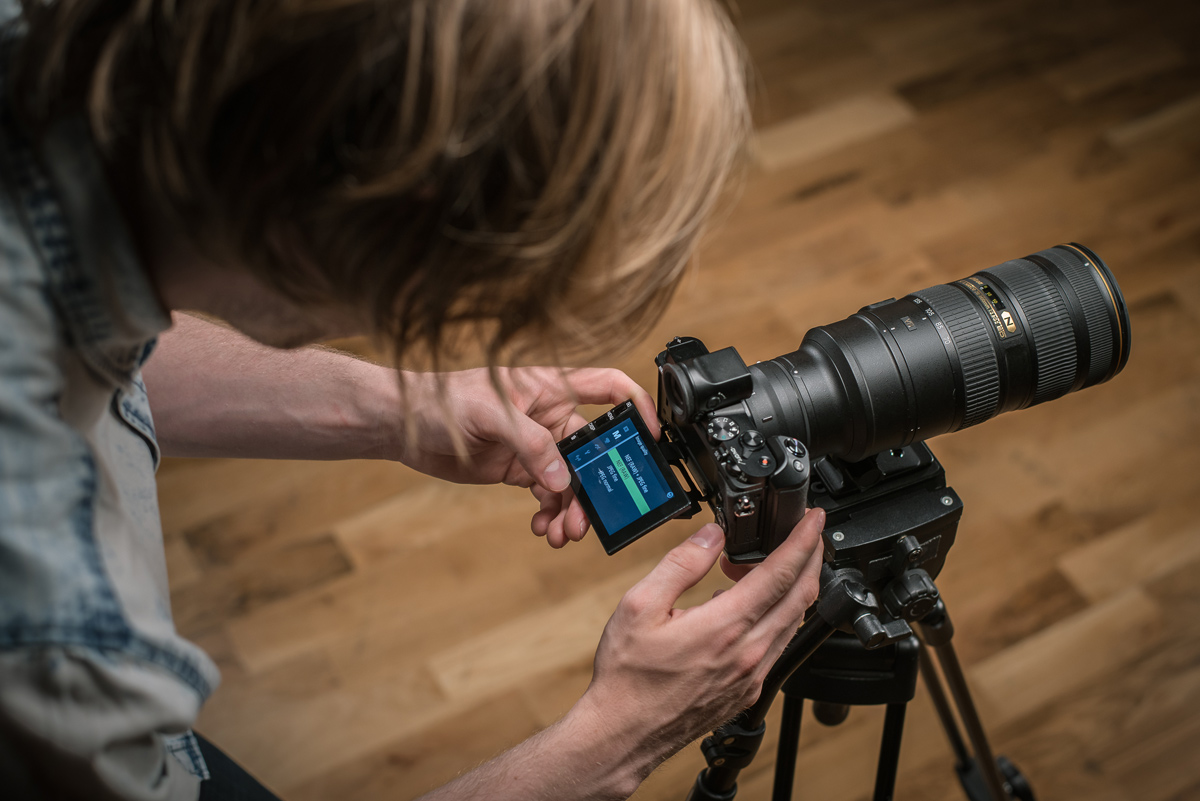Making a 4K RAW Music Video with 20,000 Still Photos
Chris Hershman Video - Behind The Scenes of Tall Walker's latest music video—“Dance All Night”—video by Chris Hershman with the help of Tim and Neal.
Chris Hershman, a Chicago-based filmmaker, photographer and musician, is a Nikon D4, D300s, D600, D800 and D7100 devotee. One day he got it in his mind to tackle a personal project. A creator of live music performance videos, this inventor wanted to step outside his regular motion scheme with a mission to up an ante in creativity, stretch a product’s intended use and be one of the first to create a fluid 4K RAW music video using only still photos.
“Most artists like to push the envelope, and I think within this very competitive space (photography/videography), we’re all vying to gain attention that will lead to more notoriety and more business,” he grins. “With 4K all the rage, I needed to learn more about this technology and see what I could do. The result was quite an experiment that took way more hours than anticipated, but the results are eye-opening.”
Chris Hershman, Chicago-based Filmmaker, on set of Tall Walker’s 4K RAW music video “Dance All Night” using a Nikon 1 V3 camera, FT-1 Mount Adapter and AF-S NIKKOR 70-200mm f/2.8G ED VR II lens.
Isn’t There An Easier Way?
Make your own 4K video from still photos? Yes, of course there is an easier way than what Hershman did, but why do men scale Mount Everest or sail across the ocean? For adventure. To test the waters. To set personal challenges.
“During my filming career I’ve created live music video performance using traditional cinema cameras, plus various Nikon HDSLR cameras. I felt I was missing out, so I took up a personal challenge: create a 4K RAW music video using 100 percent still images.” With a smile, he adds, “Why? I wanted to see if my own 4K methodology and approach would work.”
The base element in any motion picture is the still frame. “If you have a camera that’s capable of capturing single photo shots quickly enough, at a high resolution quality, and in a long enough sequenced series or burst mode, then I imagined there could be an alternate way to way to create 4K,” he mused.
“Sure I could have used a 4K camera and shot in the richest video codec available. But to date only a handful of cameras have proved their merit, especially when we are talking about 4K RAW” says Hershman. “I reasoned that if a camera could produce an equivalent high-resolution frame still, plus fire-off a high-count sequential rapid series of stills, then I could string frames together with software.”
Chris Hershman using the Nikon 1 V3 camera and 1 NIKKOR 32mm f/1.2 handheld.
Nikon 1 V3 @ 60 RAW Frames Per Second
Hershman found the tool that was up to the challenge: the Nikon 1 V3. What sealed the deal was this camera’s ability to capture up to 40 consecutive RAW images when set to Burst Mode—and doing so at an incredible rate of 60 frames per second. These files, pushed together closely in sequence using software, yield approximately 1.6 seconds of continuous motion if played back at 24p—just enough of a span of time for his DIY 4K game plan, which included among other things, a fast paced look to add to the energy of the piece.
The Nikon 1 V3 has an 18.4MP image sensor, which actually translates to images that are larger than even the larger 5K RAW format—for this project, Hershman chose to downsize them down to 4K to match the more ubiquitous 4K format and for ease of processing. Because the camera is mirrorless, it can capture stills faster than a DSLR. In other words, minus the internal movements of mirror-up mirror-down, the frame rate of acquisition easily exceeds that of a DSLR, making it suitable for Hershman’s project.
After mapping his storyline, determining scenes and assessing challenges to be faced, Hershman hit the pavement. He served as director and camera operator. The first technical decision was file size. “I opted to capture stills because the RAW image file format offers such a rich color opportunity and far more information with its massive resolution.”
Second decision was to make sure any photo series captured would yield a smooth conversion into motion. “The Nikon 1 V3 set to Continuous burst gave me that high-count RAW image capture in a row. Try that on another camera,” he says. A 40-image file series took approximately 1 second for the camera to capture, but to produce a 4K RAW music video of roughly three minutes in length he’d have to generate almost 20,000 still photo frames. You can see the end-result below, but be sure to also check out the full 4K version here.
Music Video - "Dance All Night" by the band Tall Walker
Understanding Capture
Hershman’s piece is entertaining, engaging and you’d never guess it was made with photo stills.
To understand why the video looks as smooth, crisp and colorful as it does, Hershman adds that we first need to understand how the camera captures each frame. “The biggest benefit to using this camera is the fact that it’s mirrorless. There’s no physical shutter limiting us when it comes to how fast we can shoot our burst. Since the shutter is electronic, we have the ability to shoot extremely fast shutter speeds up to 40 continuous frames. Doing so resulted in crystal clear moments and hi-speed slow motion clips.”
In darkness using the 1 NIKKOR 32mm f/1.2 lens with a handheld camera, Hershman was able to shoot at about 1/120 of a second and see barely any digital noise. “The blacks are super dark but the images are sharp and not over contrasted. The colors pop and burst on screen,” he asserts. “Explosions of color filled the frame when shooting. Using these lasers and colorful high-powered lights was a great way to showcase the camera’s abilities.”
Elaborating on photo versus video differences, Hershman adds that the look of a still shot at 1/120 of a second is completely different than one produced at normal video rate of 1/25 or 1/50. “Stack together 40 frames produced at 1/120 of a second and you see immense digital information with color delivery that’s quite breathtaking.”
Push Processing
Early-on, this DOP realized a few stylistic and technical challenges would have to be carefully considered. Due to the burst limitation, his production could have turned out to be just a series of short cuts.
“I knew I needed to smooth out the end-product and capture keeping storyline continuity in mind. If I moved between cuts too jarringly I might cause the viewer a slight touch of nausea. An even bigger challenge was that I had to overlay an audio track. How could I logically present all elements while keeping style and storyline?”
To add movement to the scenes, lights and lasers were added behind silhouetted subjects. To get a great low-light look, the 1 NIKKOR 32mm f/1.2 lens was used.
The solution? Lots of silhouetted angles and shots that worked without synced lip movement. “Minus a way to time audio to video, I had to create visuals that worked no matter what was being heard at any moment,” he shares. “Conceptually, showing mostly shots of a live band playing would have been an extremely difficult challenge given the 40-burst limitation.”
Going the Distance: 4K
It took Hershman quite a bit of time to crunch through all 20,000 RAW image files. “Of course the post-process was extremely time consuming. I could have really gotten lost in post for weeks on end,” he furthers. “However, my motto is and has always has been to just keep it simple.”
One way to hasten production was to not edit individual stills. He did however, at the project start, go down that path by retouching some initial clip series. “The time it took to get the look I wanted, plus exporting these giant batch sets of images, took too long and too much CPU. I learned it was best to take image files from the camera direct to video editing software,” he shares.
Twenty-thousand still images have been spun into a video that’s stunning, full of color and dynamic range. It has astonishing clarity—especially in areas where there’s movement in the frame. “I was so impressed with the color range and the images shot straight from the camera that I just went with what I got.”
The resulting video of the band Tall Walker is a 4K resolution from a camera that’s not made to intentionally shoot 4K video. “The individual Nikon 1 V3 RAW photo file may be edited with meticulous attention. This opens endless post process options,” says Hershman. “One step further, those single RAW images can be strung together to yield a motion look. This means I have the ability to take the look, style and exposure to great extremes. When you consider the possibilities these large still images offer, given the fact that they are so much larger than traditional Full HD 1920 x 1080, you can re-imagine creative cropping and panning in these sequences.”
Camera WOW
Hershman, who began shooting stills long before becoming a filmmaker, is most interested in how this project permitted him to combine photography skillset and mash with filmmaking. “Very inspiring—colliding two of my favorite visual aspects, stills and motion, and putting both to the test while working on an extremely challenging task.”
While this may not be the ideal solution for the future of 4K RAW music video making, Hershman points out that his endeavor yielded 4k quality video at a consumer price. But remember, he spent countless hours with an overloaded CPU that was churning on RAM and processor might.
“In my opinion this caliber of video exceeds current video definition standards and alludes to a future with a standard at 4K,” asserts Hershman. “Cameras such as the Nikon 1 V3 give us a glance into new cinematic possibilities. Cameras that can make higher resolution films range in the thousands of dollars. The Nikon 1 V3 can be purchased at a fraction of the price, and makes for a phenomenal still image camera. Add to that the option to use the Nikon FT-1 adapter, which permits me to use my FX NIKKOR lenses, which saves me the cost of purchasing a slew of new lenses.”
Taking a look at technology and finding new ways to use it was what Hershman set out to do. He reveals he had big ambitions to include tons of production equipment and movement, but, “By the end of the song you typically forget you’re watching still images. The fact that this wasn’t shot on a video camera really blows your mind.”

Nikon 1 V3 on set of Tall Walker’s latest music video.








